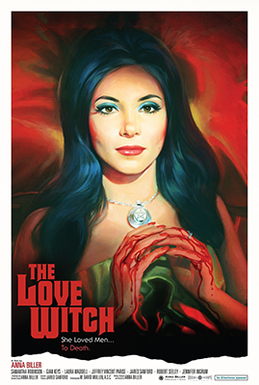
| Director(s) | Nicolas Winding Refn |
| Principal Cast | Elle Fanning as Jesse Jena Malone as Ruby Bella Heathcote as Gigi Abbey Lee as Sarrah Karl Glusman as Dean Keanu Reeves as Hank |
| Release Date | 2016 |
| Language(s) | English |
| Running Time | 117 minutes |
The Neon Demon follows Jesse, an aspiring young model looking to make it big in Los Angeles. Armed with only her beauty and charm, the budding star finds herself caught up in the machinations of an industry that simultaneously craves and detests the beauty she possesses. The movie deftly tackles exploitation, sexuality, beauty, and innocence in a way that brings lights the very real issues plaguing the fashion industry while offering a deep dive into the way humanity approaches beauty and aesthetic.
Jesse, on top of being the protagonist, is a stand in for beauty in a more metaphysical sense. Characters constantly talk about her attractive qualities, positioning themselves in relation to her on a spectrum ranging from deification to envy and hatred. It gives every interaction subtext about the way we perceive and interact with beauty, both in destructive and productive capacities. Some of us view beauty as invaluable as physical health, and as such, practices like plastic surgery are necessary to a “good” life. For others, beauty is vain and we should seek to move away from it. It’s all a question of what we think of ourselves. On top of that, we have to balance those ideas with how we think others view them as well. Each of these threads are explored in detail and in relation with one another culminating in a truly unique horror movie about the aspects of our relationship with beauty.
Speaking of beauty, the movie is mesmerizing to listen and watch. Shots are oozing with color and neon blues and reds are used to symbolize egoism and danger respectively. There are mirrors in almost every shot and they’re utilized in every way possible, from background props to make dialogue scenes more memorable to doorways for exploring the human condition. The way the movie is cut gives it a dream like feeling in key moments and adds a constant sense of tension in others. Refn knows how to play with expectations and uses editing misdirects to get memorable and well-earned scares. The movie is violent and gory, but only when it needs to be, so I didn’t think it came off as gratuitous. I got lost in every scene because of Cliff Martinez’s music. It’s synthy and hypnotic, completely lulling you into the energy of whatever is happening on screen. I felt scared, excited, wanted to dance, and completely got into the zone. There’s a lot of range in the music and it’s on of the best soundtracks I’ve heard in a movie. The sound editing is also on point and there’s not always music blaring, despite the obvious opportunities for it. When it suits the movie, silence and a distinct chime motif are used to thematically link pieces and add more tension. Put together, it’s an audio-visual experience that’s hard to beat. It knows when to assault the senses and when to hold back for the right moment.
Every performance is on point, but Fanning really shines as the lead of this giallo (big Suspiria vibes) inspired trip through the fashion industry. She starts off innocent and timid trying to find her footing. Never once does she feel manipulative or like an annoying goody two shoes. Instead, she feels almost like beauty personified, trying to make it in a cutthroat industry with only her looks at her side. Watching her transform into a more confident, narcissistic individual is harrowing but entertaining, because it feels natural from a storytelling/psychological perspective and supernatural from a thematic perspective.
My problems with the movie have to do more with the execution of the third act. There’s a lot of grounded realism in the first two acts with some more surreal elements, but by the time the third act rolls around it feels like a total switch. The story just starts going and gets really…. wow. It’s certainly effective and memorable, but I thought that it came off as too allegorical instead of balanced like story had been up to that point.
REPORT CARD
| TLDR | The Neon Demon is a psychological horror movie about the awful things that await a young model with big aspirations in Los Angeles and as an allegory about humanity’s relationship with beauty wrapped up in a slick neon infused color palette and an synthy mesmerizing soundtrack. If you like more surreal horror that focuses on atmosphere as opposed to jump scares or are interesting an fascinating take on narcissism, this is the movie for you. |
| Rating | 9.8/10 |
| Grade | A+ |
Go to Page 2 to view this review’s progress report .


















